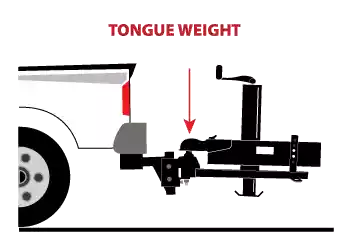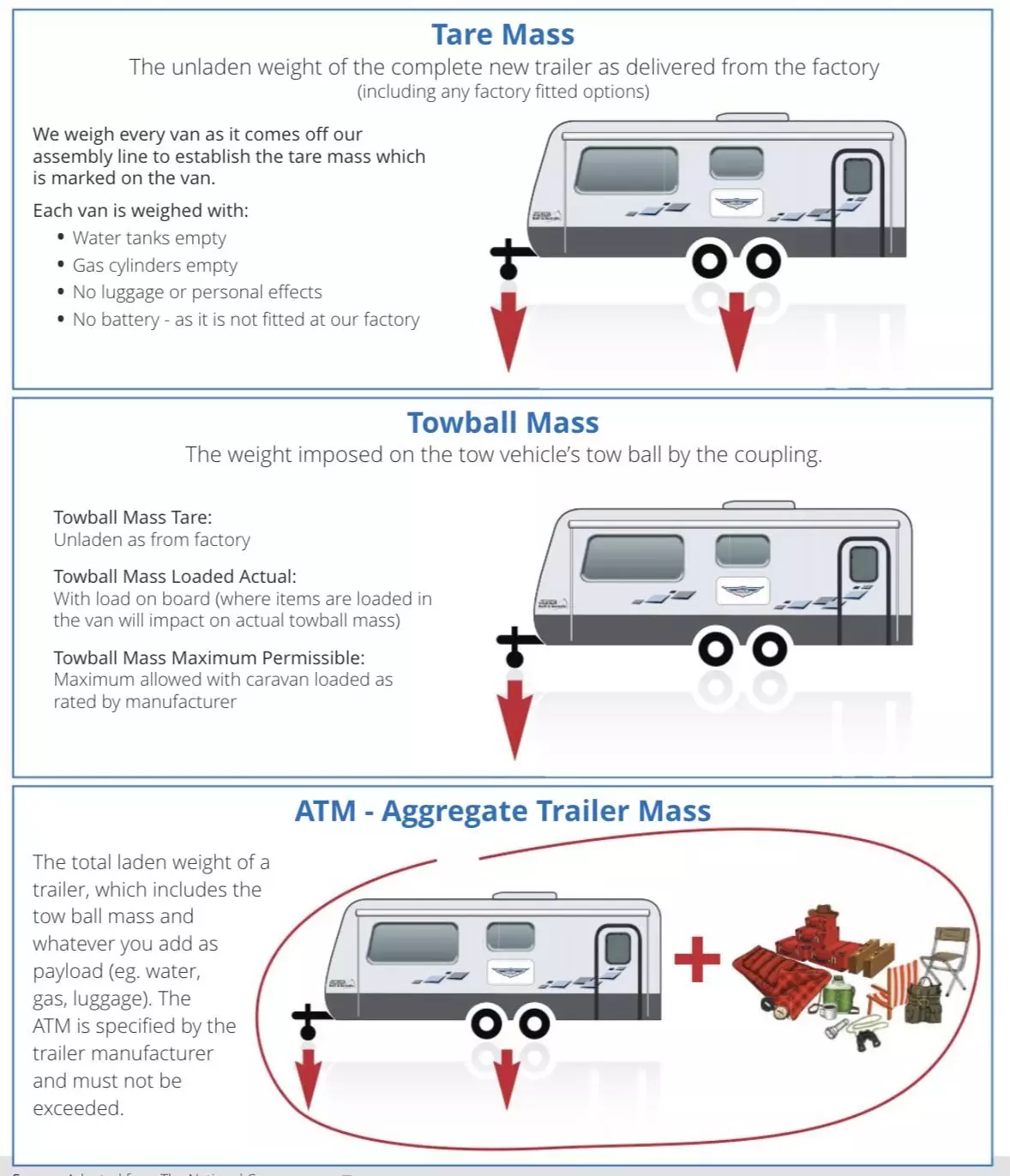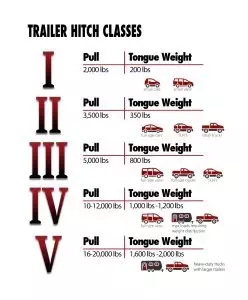Have you ever wondered where the weight should be when towing? It’s a question that often puzzles many of us. Whether you’re pulling a trailer, a boat, or any other type of towable, understanding weight distribution is crucial for a safe and efficient towing experience. In this article, we’ll explore the importance of properly distributing weight when towing and provide practical tips to help you achieve optimal balance. So, let’s get started and discover the key to keeping your towing adventures smooth and problem-free.
Factors to Consider for Proper Weight Distribution When Towing
Weight Distribution Basics
When it comes to towing, proper weight distribution is crucial for a safe and smooth journey. The way you distribute the weight of your trailer and its contents can greatly impact the stability and control of your towing vehicle. In order to achieve this, there are several factors that need to be taken into consideration.
Understanding Gross Vehicle Weight Rating (GVWR)
One of the key factors to keep in mind is the Gross Vehicle Weight Rating (GVWR) of your towing vehicle. This is the maximum weight that your vehicle can safely carry, including both the vehicle itself and any additional load. It is important to know your vehicle’s GVWR so that you can ensure that you do not exceed it when loading the trailer. Exceeding the GVWR can put excessive strain on your vehicle’s brakes, suspension, and tires, compromising its safety and performance.
Determining Tongue Weight
Another important consideration is the tongue weight, which refers to the downward force exerted on the hitch ball by the trailer’s coupler. Proper tongue weight is essential for balancing the load and ensuring stability while towing. As a general rule of thumb, tongue weight should typically be about 10-15% of the total trailer weight. However, it is always advisable to consult the owner’s manual or the manufacturer’s guidelines for the specific recommended tongue weight for your vehicle and trailer.
Considerations for Trailer Weight Distribution
In addition to tongue weight, the distribution of weight within the trailer itself is also crucial for proper weight distribution. The goal is to evenly distribute the weight throughout the trailer to prevent excessive weight on either end. This can be achieved by strategically placing heavier items towards the center of the trailer and distributing them as evenly as possible. By doing so, you can help maintain the balance and stability of the trailer, leading to a safer towing experience.
Weight Distribution Methods
1. Rearward Placement
One weight distribution method is to place the majority of the weight towards the rear of the trailer. This method can be suitable for trailers that are hauling light or non-perishable items. However, it is important to remember that excessive weight towards the rear can lead to reduced stability on the towing vehicle, making it more prone to swaying and compromising control.
2. Forward Placement
Conversely, another weight distribution method involves placing the weight towards the front of the trailer. This is often recommended for trailers carrying heavier items or items that may shift during transit. By placing the weight forward, you can help minimize the risk of trailer sway, enhance stability, and improve overall control of the towing vehicle.
3. Even Distribution
An ideal weight distribution method is to achieve an even distribution of weight throughout the trailer. This method involves spreading the weight evenly from front to rear and side to side. By doing so, you can help maintain a balanced load, minimizing the strain on the towing vehicle and enhancing stability during the towing process.
4. Weight Distribution Hitches
Weight distribution hitches are another tool that can greatly assist in achieving proper weight distribution. These hitches are designed to redistribute the weight of the trailer and transfer a portion of it to the front axle of the tow vehicle. By doing so, weight distribution hitches help to level the trailer and the towing vehicle, improving stability and control. They are particularly useful when towing larger trailers or heavier loads, as they can significantly enhance towing safety.

This image is property of www.weigh-safe.com.
Weight Distribution Tips and Best Practices
Consider the Towing Vehicle’s Specifications
It is essential to consider the specifications of your towing vehicle before loading the trailer. Understanding the towing capacity, GVWR, and tongue weight limitations of your vehicle is crucial in ensuring safe and efficient towing. Exceeding these specifications can lead to stability issues, increased wear on components, and even potential accidents. Check the owner’s manual or consult the manufacturer for accurate information regarding your vehicle’s towing capabilities.
Follow the Manufacturer’s Guidelines
Manufacturers provide specific guidelines for weight distribution and towing capacities for their vehicles. It is recommended to adhere to these guidelines to maintain optimal safety. The manufacturer’s guidelines will often provide information on the appropriate tongue weight, weight limits, and any specific instructions for loading and distributing weight in the trailer. Following these guidelines will help ensure that you are operating within the recommended parameters and reduce the risk of accidents.
Maintain Proper Tire Pressure
Proper tire pressure plays a significant role in towing safety, as it affects the vehicle’s stability, handling, and braking capabilities. Before embarking on a towing journey, make sure to check the tire pressure of both the towing vehicle and the trailer. Underinflated or overinflated tires can lead to poor handling, increased susceptibility to sway, and reduced braking efficiency. Refer to the tire manufacturer’s recommendations or the vehicle owner’s manual for the appropriate tire pressure and make adjustments accordingly.
Balance the Load
Properly balancing the load within the trailer is important for maintaining stability and control. As mentioned earlier, distributing the weight evenly from front to rear and side to side is crucial. Avoid placing excessive weight towards one end of the trailer, as this can cause unequal weight distribution and lead to trailer sway. Take the time to arrange the load so that heavier items are placed nearer to the center of the trailer while keeping the weight evenly distributed from side to side.
Ensure Proper Trailer Hitch Setup
The trailer hitch is an integral component of the towing system, and its proper setup is essential for safe weight distribution. Ensure that the hitch is securely attached to the towing vehicle, and that the weight is distributed evenly on the hitch ball. Improper hitch setup can result in unstable towing, leading to sway and compromised control. If you are unsure about how to properly set up a trailer hitch, consider consulting a professional for assistance.
Effects of Improper Weight Distribution
Decreased Stability and Control
Improper weight distribution can have severe consequences on the stability and control of your towing vehicle. If the weight is not properly distributed, the towing vehicle may become unbalanced, leading to decreased stability. This can result in unpredictable handling, an increased risk of accidents, and difficulty maintaining control of the vehicle while towing.
Increased Risk of Trailer Sway
Trailer sway is a dangerous phenomenon that occurs when the trailer starts to move side to side independently of the towing vehicle. Improper weight distribution can exacerbate trailer sway, making it more difficult to regain control. The risks associated with trailer sway include jackknifing, swerving, and potential rollovers, posing a significant threat to the safety of both the driver and other road users.
Excessive Strain on Towing Vehicle
When weight is improperly distributed, the towing vehicle may experience excessive strain on its suspension, brakes, and tires. Uneven weight distribution can lead to increased wear and tear on these components, reducing their lifespan and potentially leading to costly repairs. Additionally, the additional strain on the towing vehicle can negatively impact its performance, resulting in reduced fuel efficiency and overall towing capacity.

Legal Requirements for Weight Distribution
State and Federal Towing Regulations
It is important to be aware of and adhere to state and federal towing regulations regarding weight distribution. These regulations may vary from one jurisdiction to another, and failure to comply with them can result in fines or other legal consequences. Familiarize yourself with the specific requirements of the state you are operating in, including weight limits and guidelines for proper loading and weight distribution.
Commercial Vehicle Weight Limits
For commercial vehicles, there are specific weight limits that must be followed. These weight limits take into account not only the vehicle’s overall weight but also the weight distribution across axles. Failure to comply with these weight limits can result in penalties and may even lead to your vehicle being taken out of service. It is essential to understand and adhere to these regulations to ensure both the safety and legal compliance of your commercial towing operations.
The Importance of Proper Weight Distribution for Safe Towing
Enhanced Stability and Handling
Proper weight distribution significantly enhances the stability and handling of your towing setup. Distributing the weight evenly among the towing vehicle and trailer helps to create a balanced and level driving experience. This balance, in turn, improves the vehicle’s responsiveness, reduces swaying, and provides better overall control while towing. With enhanced stability and handling, you can navigate through various road conditions and potential hazards with greater confidence and safety.
Reduced Tire Wear
Proper weight distribution can help minimize tire wear and extend their lifespan. Uneven weight distribution places disproportionate stress on specific tires, causing them to wear out more quickly. By spreading the weight evenly, you ensure that all tires bear a similar amount of load, reducing the risk of uneven and premature tire wear. Regularly inspecting and maintaining the tire pressure and rotating the tires can also contribute to prolonged tire life and optimal performance.
Safer Braking
Appropriate weight distribution plays a crucial role in the braking performance of your towing setup. Uneven weight distribution can result in imbalanced braking, where some wheels have more or less traction than others. This can compromise the effectiveness of your brakes and increase the stopping distance. Proper weight distribution, on the other hand, improves the distribution of traction across all wheels, enhancing the braking efficiency and reducing the risk of accidents.
Minimized Risk of Accidents
Proper weight distribution directly contributes to overall towing safety, minimizing the risk of accidents. By maintaining a balanced load and evenly distributing the weight, you ensure that your towing vehicle and trailer function harmoniously as a single unit. This reduces the chances of trailer sway, loss of control, or undesired maneuvers while towing. Ultimately, proper weight distribution provides a safer towing experience for both the driver and other road users.

This image is property of www.torklift.com.
Conclusion
Achieving proper weight distribution when towing is crucial for a safe and enjoyable journey. By following the weight distribution basics, understanding the role of the GVWR and tongue weight, and considering the different weight distribution methods, you can ensure that your towing setup is properly balanced. Implementing weight distribution tips and best practices, such as considering the towing vehicle’s specifications and following manufacturer’s guidelines, will further enhance towing safety. Understanding the effects of improper weight distribution, the legal requirements, and the importance of proper weight distribution for safe towing reinforces the importance of this aspect of towing. Remember, by giving due attention to weight distribution, you can enjoy a smoother, more stable towing experience while minimizing the risk of accidents and ensuring the well-being of yourself and others on the road.



